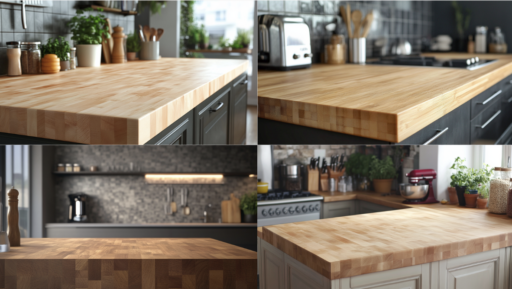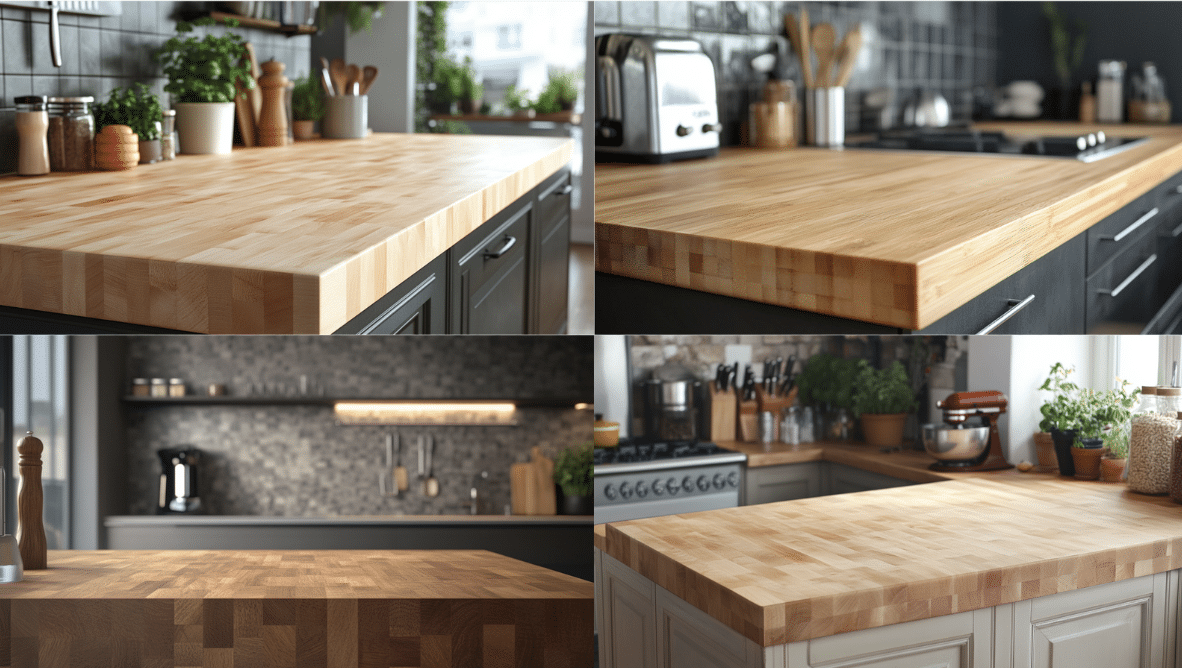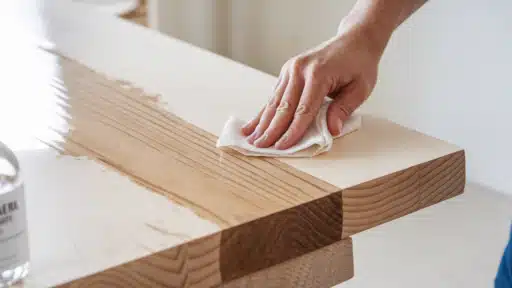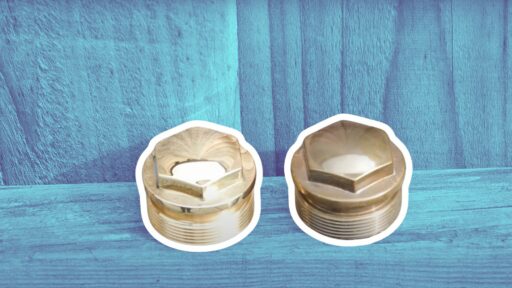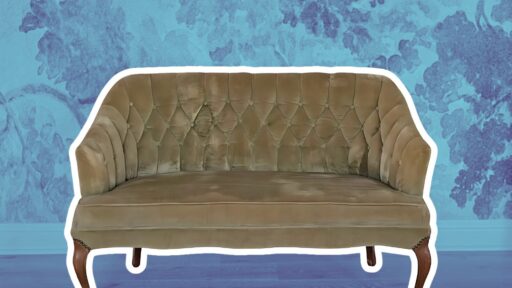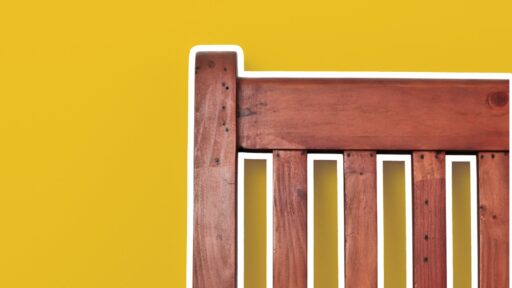We get it – picking the right wood for your kitchen countertop can feel like a puzzle. With so many options out there, how do you know which one will work best in your home?
Don’t worry, we’re here to help you figure it out.
In this post, we’ll walk you through 8 popular wood types for butcher block countertops. We’ll cover everything from classic maple to exotic teak, giving you the lowdown on what makes each wood special.
By the end, you’ll have a clear picture of which wood might be the perfect fit for your kitchen.
We’ll look at things like durability, color, and maintenance needs, so you can make a choice that fits your lifestyle and looks great too.
Ready to find your ideal butcher block countertop? Let’s dive in!
Why Choose Wood Countertops for Your Kitchen?
Wood countertops bring a special touch to any kitchen. Here’s why they’re worth considering:
A. Natural Beauty
- Wood adds a cozy, natural feel to your kitchen.
- Each piece has its own unique grain pattern, making your countertop one-of-a-kind.
B. Durability
- With proper care, wood countertops can last for many years.
- If they get scratched or stained, you can often sand and refinish them to look new again.
C. Gentle on Dishes
- Unlike stone, wood doesn’t make a loud clatter when you set down plates or glasses.
- Your dishes are less likely to chip or break if you accidentally drop them on wood.
D. Eco-Friendly
- Wood is a renewable resource, making it a good choice for the environment.
- Many suppliers offer wood from sustainably managed forests.
E. Versatility
- There’s a wide range of wood types to choose from, each with its own color and grain.
- You can finish wood countertops in different ways to match your kitchen’s style.
Top 8 Wood Types for Butcher Block Countertops
1. Maple
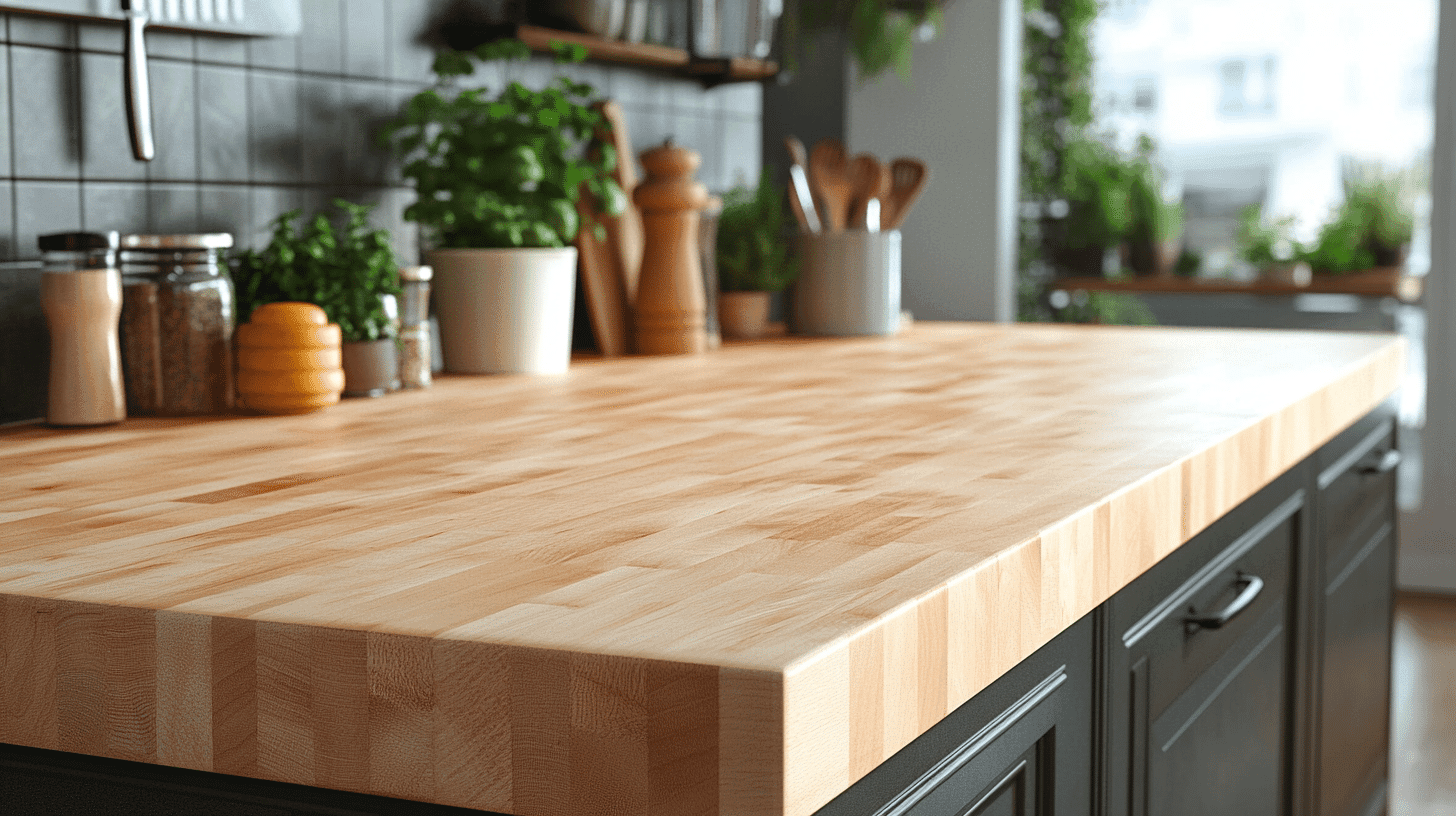
Maple is a top pick for butcher block countertops. It’s known for its light color and tight grain pattern. When you look at maple, you’ll see a smooth, clean surface that can fit in many kitchen styles.
Pros:
- It’s tough and can handle daily use without showing much wear.
- You can stain it in different colors to match your kitchen.
- It resists scratches well, which is great for busy cooks.
Cons:
- If you put it in a sunny spot, it might change color over time.
Best For: Maple is perfect for kitchens that see a lot of action. If you cook often and need a sturdy surface, maple could be your go-to choice.
2. Cherry
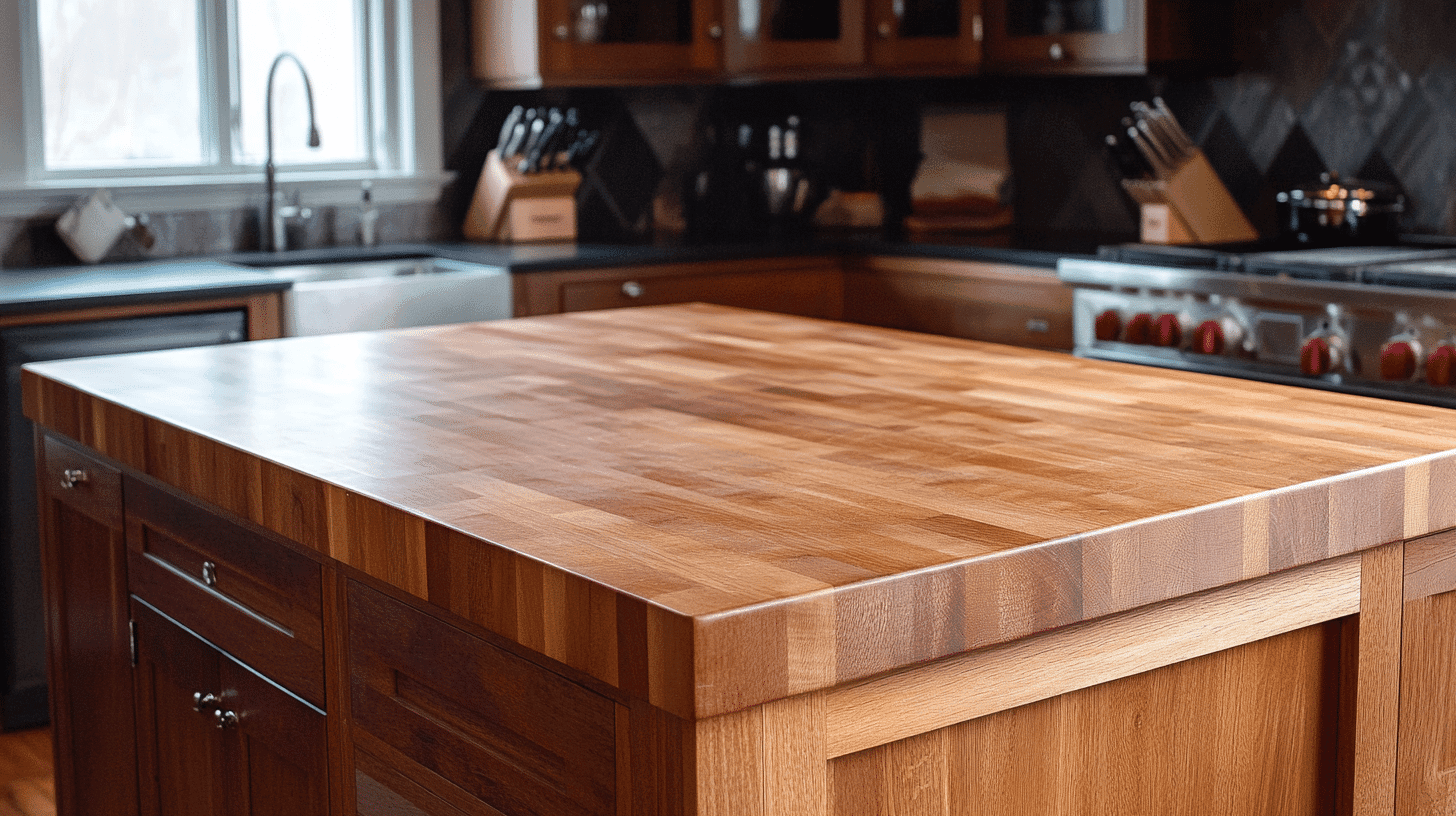
Cherry wood brings a warm, rich look to your kitchen. Its color can range from light red to deep brown. You’ll often see small knots and streaks that give each piece its own character.
Pros:
- It has a natural beauty that many people love.
- Like maple, it can resist scratches pretty well.
- It tends to darken over time, which many find appealing.
Cons:
- It’s softer than some other woods, so it can get dents more easily.
Best For: Cherry is a great pick if you want a countertop that looks stunning. It’s ideal for areas where you want to show off the wood’s natural beauty, like an island or a less-used prep area.
3. Oak
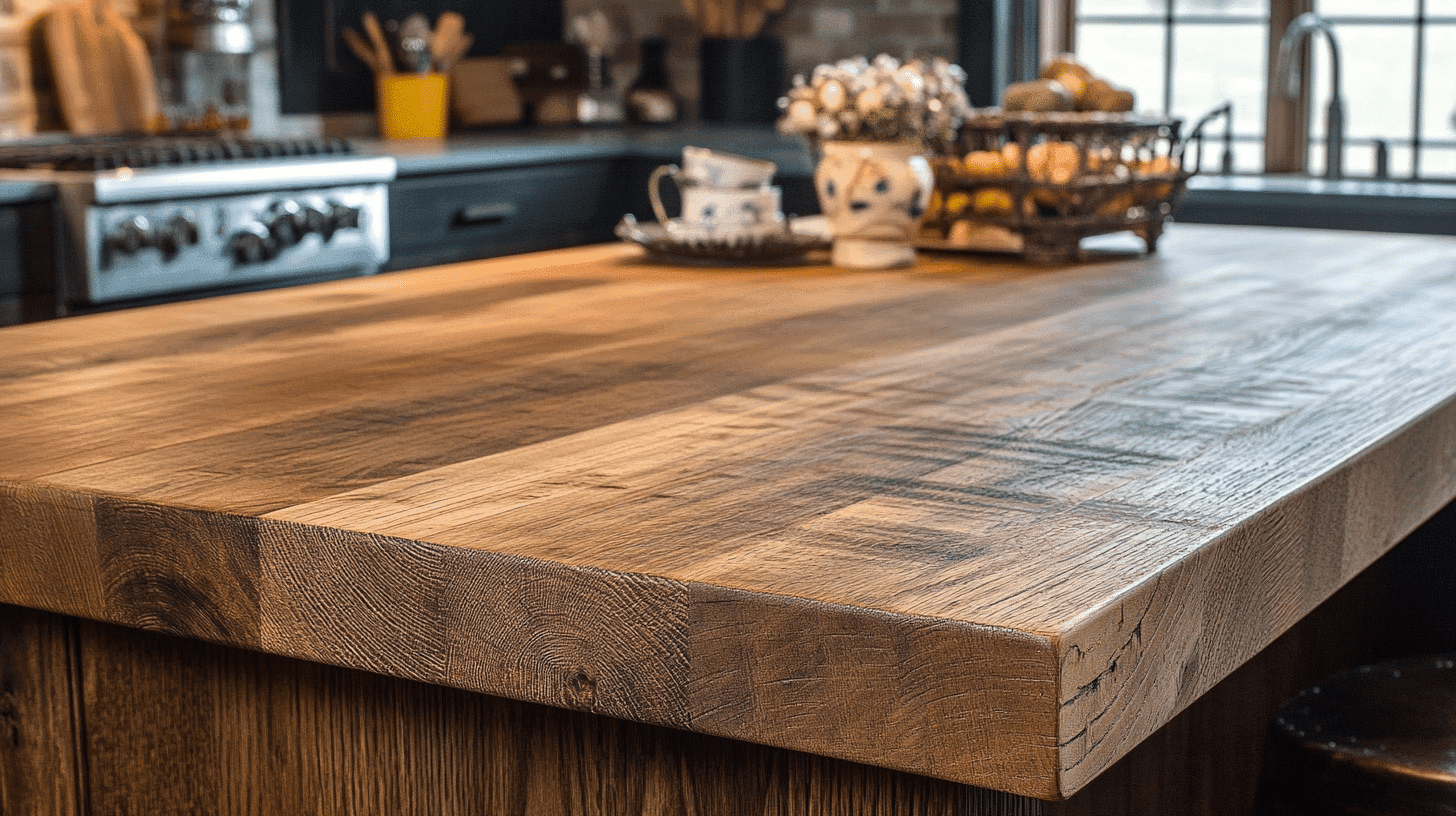
Oak is a classic choice with a distinct open-grain pattern. Its color ranges from light tan to a rich golden brown, giving your kitchen a timeless look.
Pros:
- It’s known for its strength and can handle daily use.
- The open grain adds character to your countertop.
- It resists scratches well, making it great for busy kitchens.
Cons:
- If not sealed properly, it can be prone to water damage.
Best For: Oak is perfect for traditional kitchens. Its classic look fits well with various styles and can add warmth to your space.
4. Iroko
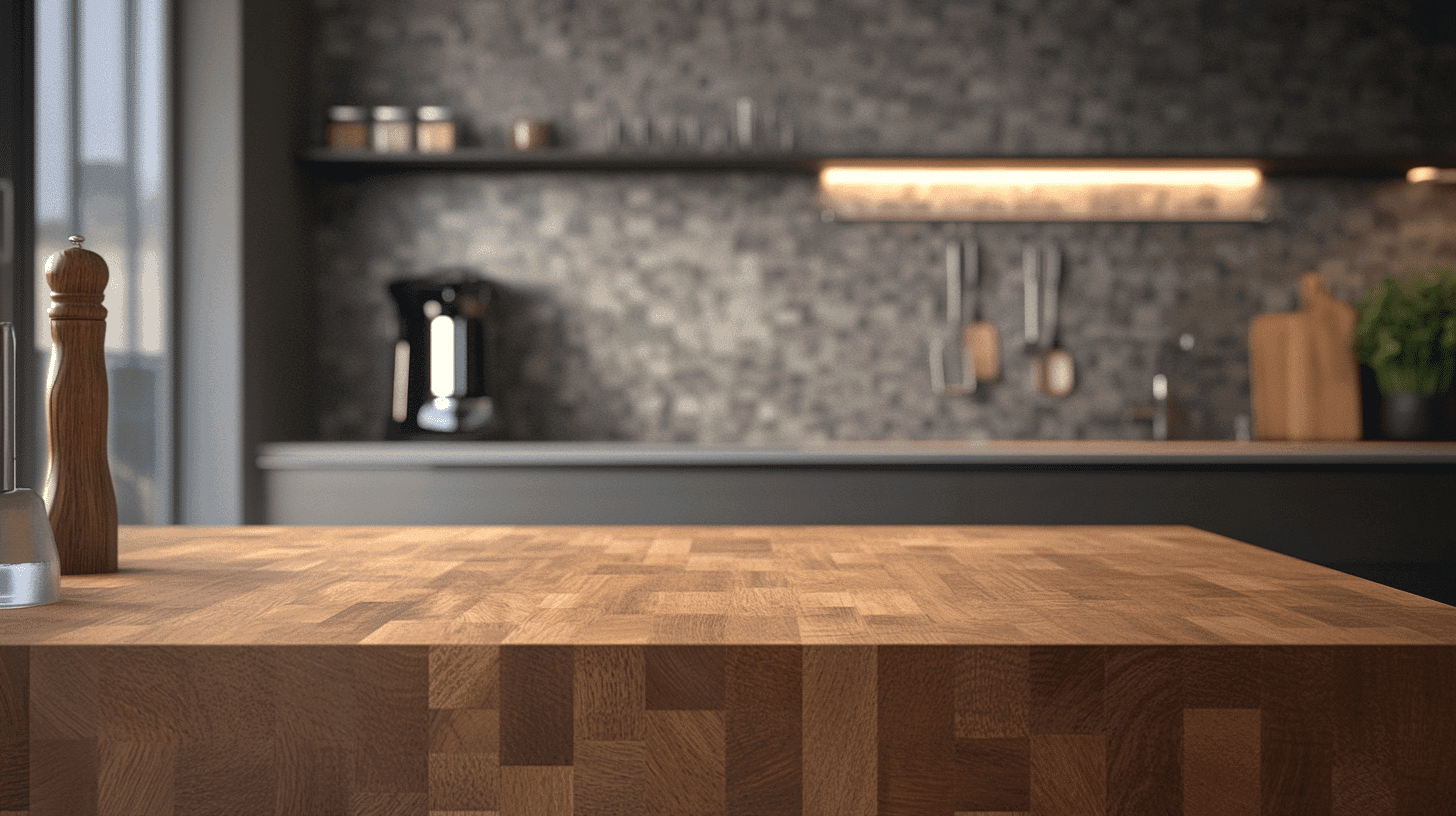
Iroko starts as a bright gold color and changes to a warm teak-like brown over time. It’s sometimes called “African Teak”.
Pros:
- It naturally resists insects and decay.
- It’s very durable and can handle heavy use.
- It’s good for both indoor and outdoor use.
Cons:
- It might be harder to find than more common woods.
Best For: Iroko is great for outdoor kitchens or areas with high humidity. It’s also good if you want a unique wood that changes over time.
5. Walnut
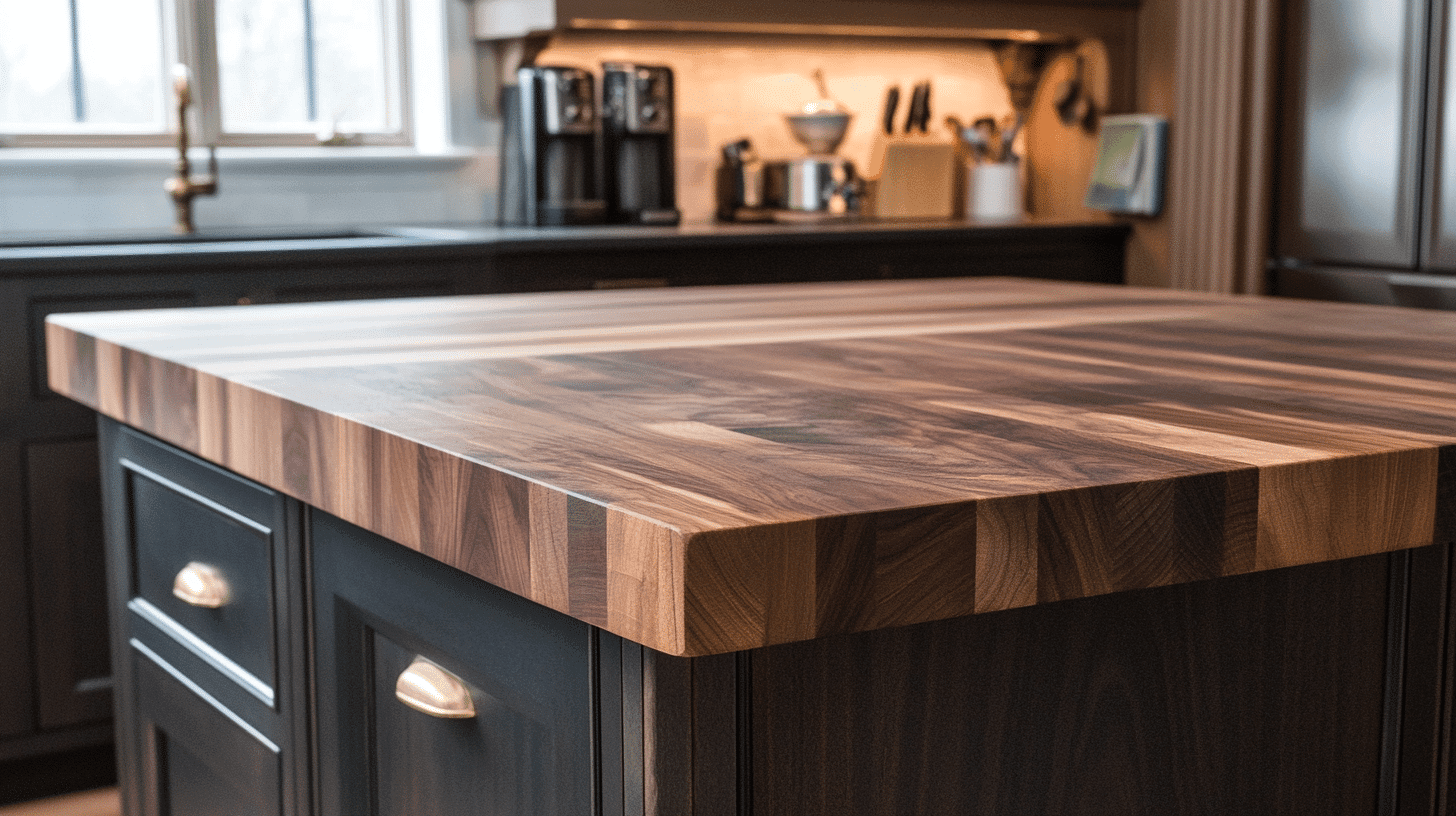
Walnut offers a luxurious look with its deep, rich color. It can range from chocolate brown to almost black, with occasional purple hints.
Pros:
- It brings a touch of class to any kitchen.
- Despite its rich look, it’s still quite durable.
- Its dark color can hide small scratches and stains.
Cons:
- It’s often pricier than other wood types.
Best For: Walnut is ideal for high-end kitchens or as an accent piece, like an island top. It’s perfect if you want a standout feature in your kitchen.
6. Teak
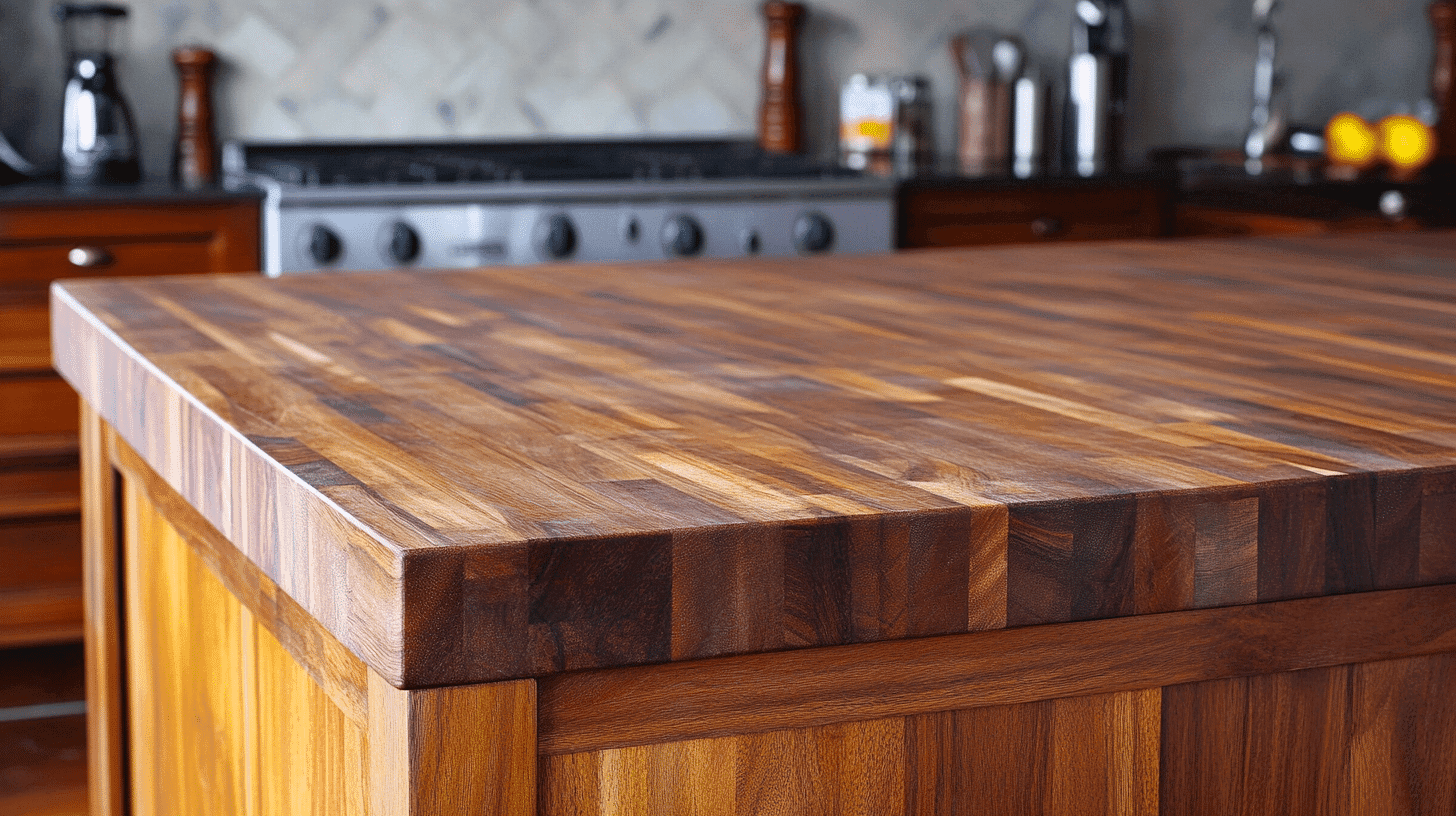
Teak has a tight grain pattern and a color that can vary from golden to deep brown. It’s known for its natural oils that give it special properties.
Pros:
- It’s naturally water-resistant, which is great for kitchens.
- It’s very durable and can last for years.
- It doesn’t need as much upkeep as some other woods.
Cons:
- It can be more expensive than some other options.
Best For: Teak is excellent for kitchens that see a lot of moisture. It’s also a good choice if you want a low-maintenance wood countertop.
7. Bamboo
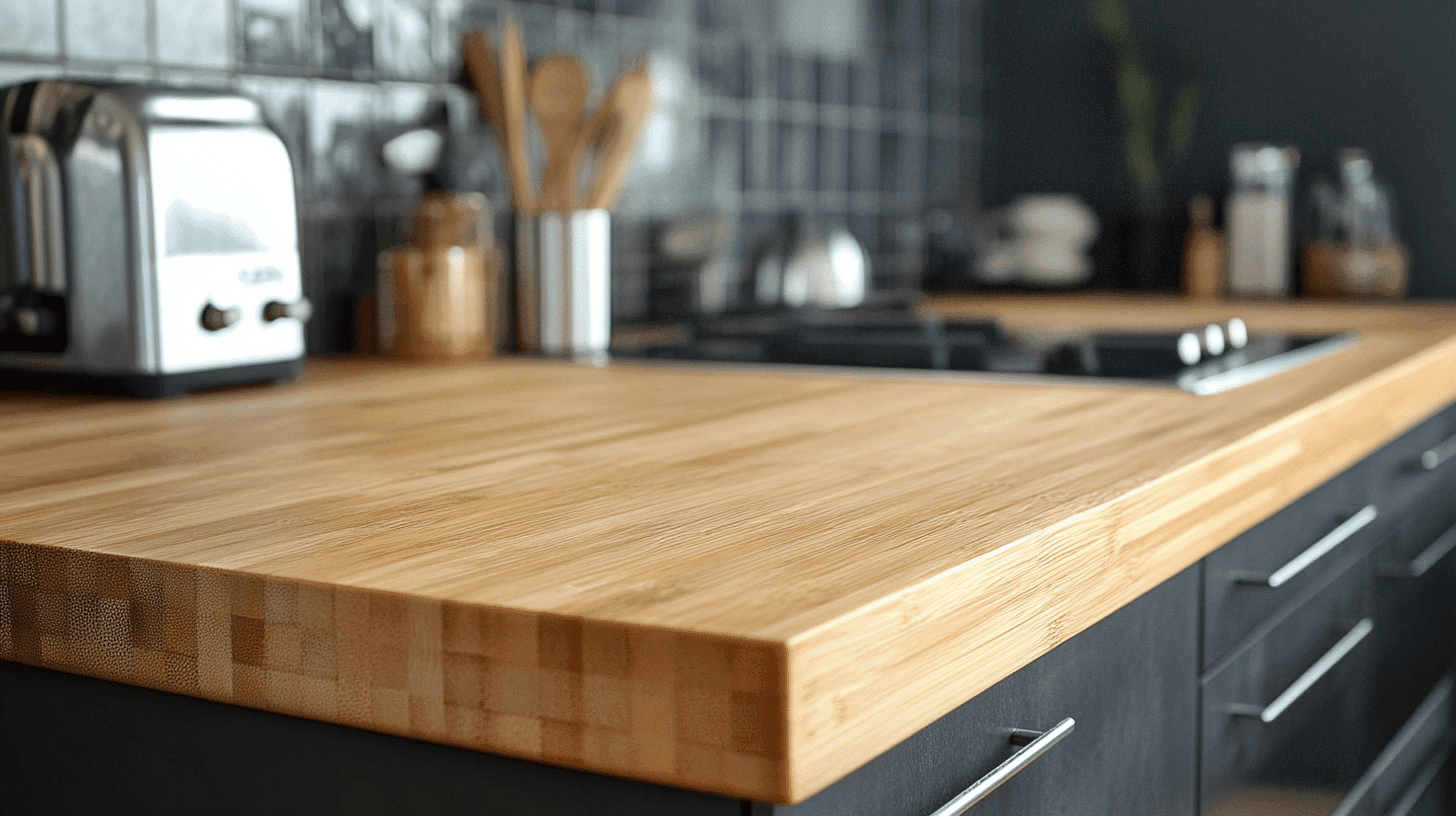
Bamboo isn’t actually wood, but it’s often used like one. It can range from light to dark brown and has a unique, straight grain pattern.
Pros:
- It’s a fast-growing plant, making it an eco-friendly choice.
- It’s surprisingly hard and durable.
- It has a modern, clean look.
Cons:
- It can be damaged by water if not sealed well.
Best For: Bamboo is great for eco-conscious homeowners. It’s also good if you want a modern look in your kitchen.
8. Birch
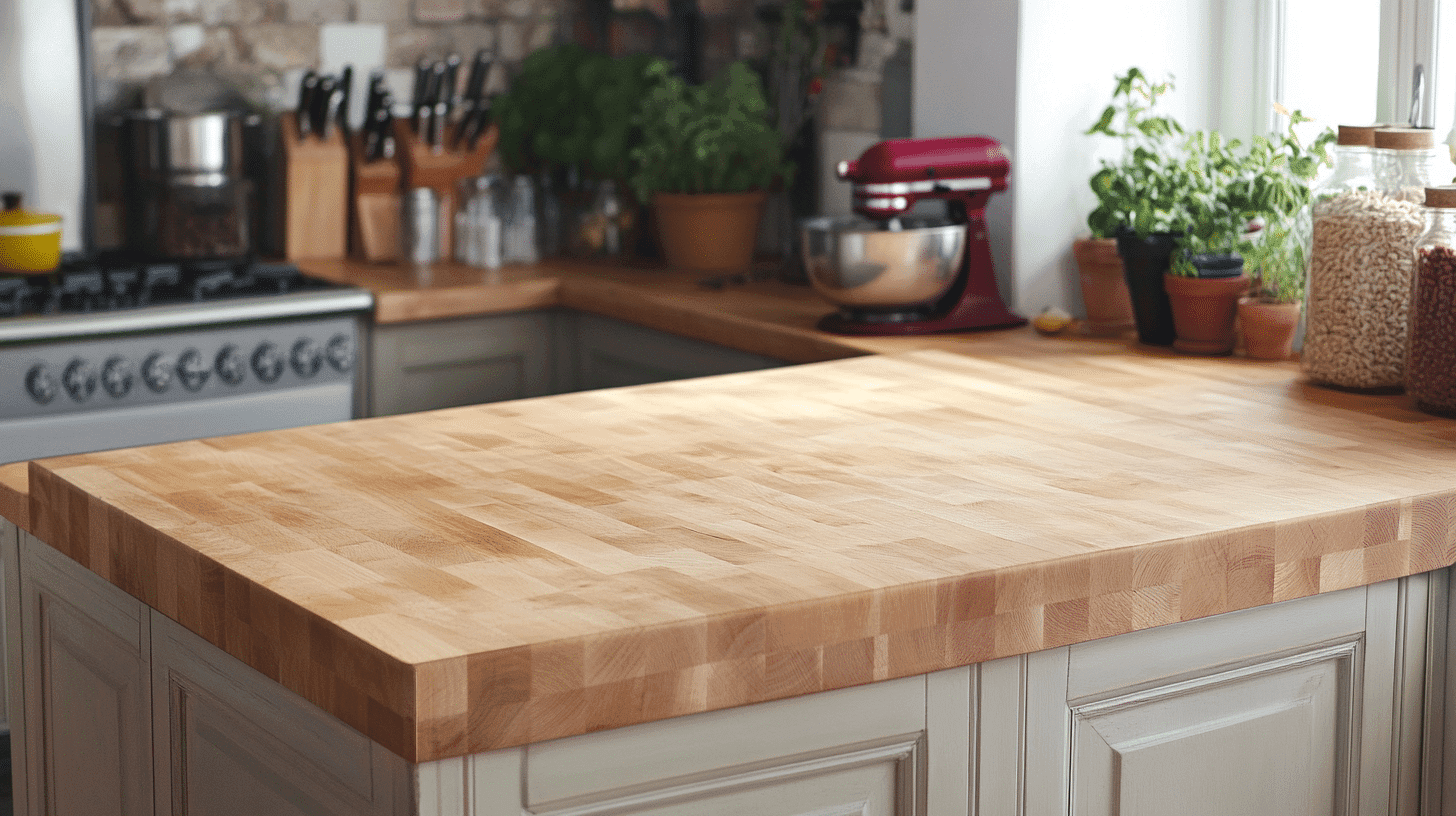
Birch has a pale, warm tone and a fine, smooth grain. It’s similar to maple but often comes at a lower price point.
Pros:
- It’s more budget-friendly than some other hardwoods.
- Its light color can brighten up a kitchen.
- It has a smooth, even texture.
Cons:
- It may need more frequent oiling or sealing to stay in good shape.
Best For: Birch is ideal for budget-friendly kitchen projects and for creating a light, bright look.
How to Choose the Right Wood for Your Kitchen
| Category | Recommendations |
|---|---|
| Lifestyle Considerations | Heavy Use: Opt for durable woods like Maple or Oak. Less Use: Softer woods like Cherry or Walnut might be suitable. |
| Aesthetic Preferences | Rustic Charm: Reclaimed woods like Pine or Oak. Modern Look: Bamboo or Walnut. |
| Maintenance Needs | Low Maintenance: Teak or Iroko. Regular Maintenance: Cherry, Birch. |
| Budget Constraints | Affordable: Birch, Maple. Premium: Walnut, Teak. |
| Sustainability | Eco-friendly Choices: Bamboo, FSC-certified woods. |
Wood Grain Patterns and Their Impact
1. Edge Grain
Edge grain butcher blocks are like the workhorses of the wood countertop world.
Picture long strips of wood standing on their sides, glued together to create a surface that’s both strong and good-looking.
You’ll see a pattern of stripes running along your counter, each one showcasing the wood’s unique character.
This setup makes edge grain countertops less likely to warp, which is great if you live somewhere with changing humidity.
Best For: Edge grain is great for large countertops and kitchen islands. If you need a lot of counter space on a budget, this could be your best bet.
2. End Grain
Imagine a chessboard made of wood – that’s what an end grain butcher block looks like. It’s crafted by standing small blocks of wood on their ends and fusing them together.
This creates a surface that’s not just eye-catching, but also incredibly tough.
Chefs love end grain because it’s gentle on knife edges and has a neat trick up its sleeve: small cuts in the wood tend to close up on their own over time.
It’s like having a self-healing cutting board built right into your kitchen. While it might cost a bit more, for serious cooks, it’s often worth the investment.
Best For: End grain is perfect for food prep areas. If you do a lot of chopping and want a surface that can take it, end grain is a smart choice.
3. Face Grain
Face grain countertops are all about showing off the wood’s natural beauty.
Think of it as nature’s artwork for your kitchen.
Each countertop tells the story of the tree it came from, with swirls, knots, and grain patterns on full display. It’s like having a one-of-a-kind masterpiece in your kitchen.
While face grain might not be the toughest kid on the block when it comes to scratches and dents, it more than makes up for it in the looks department.
Best For: Face grain is ideal for areas where looks matter most, like dining islands or bar tops. It’s great if you want your countertop to look like a piece of fine furniture.
Summing It Up
As we wrap up our tour of wood types for butcher block countertops, remember that each option brings its own charm to your kitchen.
From maple’s durability to cherry’s warmth, there’s a wood out there that fits your needs and style.
Think about how you’ll use your countertop. Do you need a tough surface for heavy cooking, or are you after a show-stopping centerpiece?
Consider your budget, maintenance comfort level, and the overall look you want to achieve.
Don’t forget to factor in the grain pattern too. It can make a big difference in both function and appearance.
Ready to take the next step? Why not visit a local showroom to see and feel these woods in person? Your perfect butcher block countertop is out there waiting for you!

